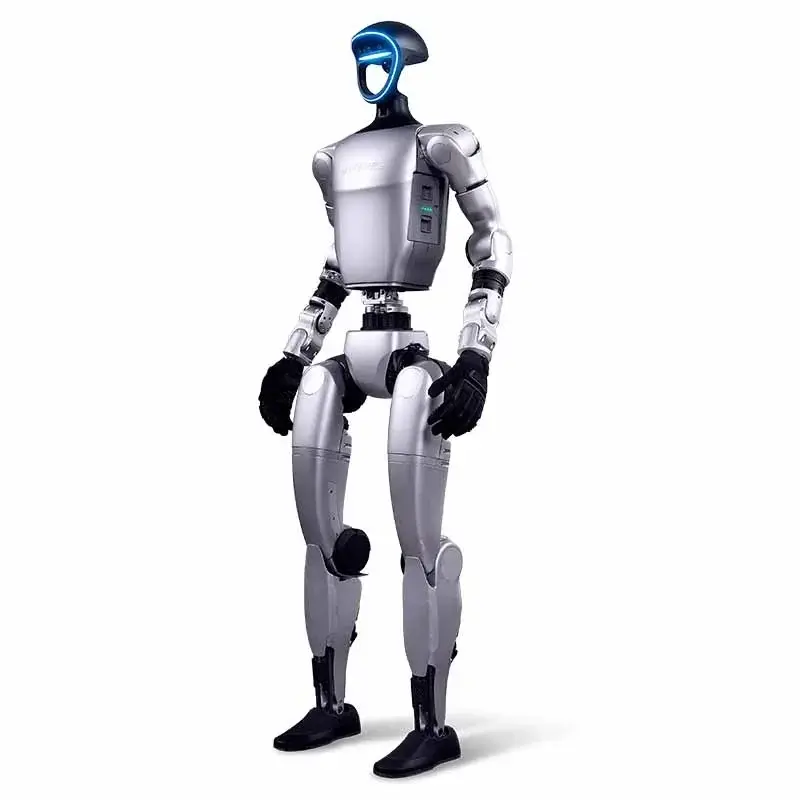Harnessing Complex Order: The Rise of 3D Printed Wireframes
In our increasingly connected world, the challenge of managing complex cable and wire networks remains prevalent, whether in industrial machinery, aerospace systems, automotive assemblies or complex laboratory equipment. Tangled, misrouted or poorly secured wires don’t just affect appearance; They can lead to equipment failure, safety hazards, maintenance nightmares, and workflow inefficiencies. Traditional solutions often fall short, offering a one-size-fits-all design that cannot accommodate unique space constraints or performance needs. where is this 3D printingespecially with Metalemerged as a transformative approach to wire management.
Why 3D printed cable clips are revolutionizing cable management
The limitations of off-the-shelf clips, clips and ties are well known. They may be mass-produced and cheap, but they face the following problems:
- Non-standard geometry: Accommodates tight spaces, unusual angles or complex machine layouts.
- Special material requirements: High temperature resistance, chemical inertness, EMI shielding or extremely high mechanical strength are required.
- Quality optimization: Excess material in bulky designs adds unnecessary weight, which is critical in the aerospace and automotive sectors.
- Integration: Provides secure mounting points directly on existing structures with no modifications required.
3D printing wireframes solve these problems by providing:
- Perfectly customized: Create brackets specifically designed to fit your unique wiring harness paths, connectors, and equipment surfaces.
- Lightweight efficiency: Complex lattice structures or topology-optimized designs reduce weight without sacrificing strength or durability. Metal printing, in particular, allows for incredibly strong yet minimalist forms.
- Excellent performance materials: Go beyond basic polymers. Take advantage of advanced metal alloy like Stainless steel (316L, 17-4PH), Titanium (Ti6Al4V), Aluminum (AlSi10Mg)or Nickel Alloy (Inconel) Properties such as high temperature stability (>1000°C for some alloys), excellent corrosion resistance, electrical conductivity or magnetic shielding.
- Integrated features: Combine brackets with built-in strain relief, cable channel grommets, RFID tag mounts or specific latching mechanisms in one component.
- Rapid prototyping and iteration: Quickly test and refine designs before going into full production. Ensure perfect fit and functionality early in the design cycle.
Design considerations for the best 3D printing wireframe
Moving from concept to functional, manufacturable wire clip requires careful attention to details customized for the 3D printing process:
- Load analysis: Precisely determine the static, dynamic, vibration and thermal loads that the support must withstand. Metal 3D printing performs well under high stress conditions.
- Material Selection Tradeoffs:
- Polymers (Nylon, PETG, ULTEM): Ideal for prototype, light duty and non-critical applications where cost is a primary factor. Lacks the sturdiness and thermal properties of metal.
- Metal (stainless steel, titanium, aluminum): Critical for harsh environments requiring precision, high strength-to-weight ratio, durability, heat resistance and EMI/RFI shielding. Ideal for aerospace, motorsports, defense and industrial automation.
- Wall thickness and conductivity: Consider the potential heat dissipation needs of the current-carrying wires and ensure sufficient thickness for strength.
- Installation strategy: Optimized bracket geometry and fastener integration for safe, vibration-resistant connection to host structure (e.g. vehicle chassis, machine frame).
- Cable interface: Designed with smooth radii to prevent chafing, incorporates stress relief, and ensures easy insertion/removal for maintenance.
- Environmental adaptability: Designed for exposure conditions—resistant to UV rays, chemical splash, salt spray, thermal cycling, and more. Metal alloys have excellent inherent resistance.
- Manufacturing restrictions: Understand the minimum feature size, draft angle (usually minimal for additive manufacturing), overhang limitations, and post-processing requirements (support removal, finishing) for the chosen technology (SLM, DMLS). Partner with a professional manufacturing services company, e.g. huge light Ensure designs are optimized for manufacturability and cost.
Why choose metal 3D printing? Unleashing engineering potential
Although polymer 3D printing has its place, Metal 3D printing (Primarily Selective Laser Melting – SLM or Direct Metal Laser Sintering – DMLS) offers unparalleled advantages for critical wire management:
- Extremely durable: Withstands high vibrations, shock loads and harsh conditions well beyond the capabilities of plastics.
- High temperature performance: Maintains structural integrity and functionality at temperatures where polymers melt or deform.
- Excellent strength and stiffness: Make sure the wires remain secure under load and routed correctly. The modulus of the metal prevents unnecessary bending.
- Shielding performance: Certain metals, such as steel, provide excellent EMI/RFI shielding, protecting sensitive electronic signals.
- Lifespan and life cycle: Metal components resist wear, fatigue and environmental degradation, significantly extending their service life. Reducing replacement frequency reduces long-term costs.
- Uncompromising design freedom: Enable complex, lightweight structures that cannot be cost-effectively cast or machined. Internal channels for cooling? Integrated mounting lugs? Complex geometric shapes? Metal 3D printing makes it possible.
Multi-Jet Fusion – MJF: Using Engineering Plastics
While metals stand out for their extreme properties, Multi-Jet Fusion (MJF) It is worth mentioning. MJF uses polymer powder (such as nylon 12) fused by a fusing agent and a refiner. Although not metal, MJF offers:
- Finer details: For complex features, the resolution is slightly higher.
- Speed and cost effectiveness (high volumes): Complex plastic parts can be produced faster than SLS.
- Chemical resistance: Ideal for oils and chemicals in laboratory and automotive environments.
MJF is ideal for complex functional plastic scaffolds with good mechanical and chemical properties. However, it lacks the ultimate strength of metal and risks limiting its potential applications due to heat resistance.
The Glow Advantage: Precision Manufacturing Tailored to Your Needs
exist huge lightwe specialize in transforming your wire clamp concepts into a high-performance reality, using Advanced metal 3D printing technology. Our expertise goes beyond printing; we offer a comprehensive One stop solution:
- Consulting and co-design: Our engineering team works with you to optimize your wire clamp design for functionality, additive manufacturing manufacturability and cost-effectiveness.
- Cutting-edge Metal Additive Manufacturing: Utilize state-of-the-art SLM/DMLS machines to manufacture parts using a variety of proven aerospace and industrial grade metal powders. We ensure optimal parameters for completeness and density.
- Materials expertise: Advice and processing on alloys exactly suited to your application needs (corrosion resistance, weight reduction, stiffness, shielding, biocompatibility or temperature resistance) with rapid material customization.
- Excellent post-processing: A full suite of finishing options available: precision machining to tight tolerances, meticulous support removal, thorough heat treatment (stress relief, aging, HIP), comprehensive surface finishing (shot blasting, sand blasting, tumbling, polishing) and strategic coating applications. This ensures functional readiness and aesthetic appeal.
- Rapid custom production: Accelerate development cycles with fast lead times for prototype verification and final use of production batches.
Whether you need a single complex titanium bracket for an aircraft wiring harness or a high-volume custom retaining clip for an automotive wiring harness, GreatLight provides precision metal components at competitive prices, backed by deep technical expertise.
Conclusion: Untangling the future of wire management
The evolution of wire management lies in the use of advanced manufacturing technologies. 3D printing, especially metal printing, goes beyond the limitations of one-size-fits-all solutions, allowing precision-engineered wire frames to be stronger, lighter, more resilient, and perfectly integrated into complex systems. This translates directly into improvements in reliability, safety, maintainability and efficiency across countless industries.
By leveraging the customization capabilities and material strengths of metal 3D printing services, e.g. huge lightengineers and designers gain unprecedented ability to solve complex cabling challenges while optimizing overall system performance. Don’t let substandard wire management derail your next project; discover how custom 3D printing solutions, especially in metal, can simplify complexity and bring unparalleled order to your critical components.
Wire Clip 3D Printing FAQs
Question 1: Are 3D printed metal wire supports strong enough for demanding applications?
Answer: Of course. Metal 3D printing (SLM/DMLS) uses high-performance alloys such as titanium, stainless steel and Inconel to produce almost completely dense parts. The mechanical properties of these parts rival or often exceed those of cast or forged parts. They are commonly used in aerospace, automotive and industrial machinery where strength, durability and reliability are critical.
Question 2: What are the main advantages of metal 3D printing wire frames over plastics?
A: Key benefits include significantly higher strength and stiffness, superior temperature resistance (to handle heat from the engine or electronics), enhanced long-term wear and vibration durability, excellent corrosion resistance, the ability to provide EMI/RFI shielding, and longer overall service life. Metal offers a level of sturdiness that plastic cannot match.
Q3: How complex can the design be? Can I really create custom shapes?
A: Yes, complexity is a core advantage of 3D printing, especially metals. You can design complex geometries optimized for specific paths, tight spaces, and unique installation requirements. Features such as internal grids, integrated fasteners or stress-relief profiles for weight reduction are easy to implement, whereas designs for traditional machining are often impossible or too expensive.
Q4: How does the cost compare with traditional manufacturing (machining, molding)?
A: For low- to medium-volume production, especially highly complex parts, metal 3D printing often offers significant advantages. more cost effective Advantages over CNC machining or investment casting as it eliminates tooling costs and minimizes material waste. For simple shapes or very large volumes, traditional methods may be cheaper. However, the value often lies in the design freedom, performance advantages and weight savings unique to additive manufacturing.
Q5: How about the surface finish and post-processing?
A: The finished surface of metal additive manufacturing has a characteristic texture. GreatLight offers extensive post-processing: Machining of key features to tight tolerances, heat treatment to ensure optimal material properties, and a range of surface treatments such as smoothing, sandblasting, polishing or special coatings to achieve the desired aesthetic and functional surface quality depending on the requirements.
Q6: How long does it take to receive the customized wire rack?
A: Delivery time depends on complexity, quantity and material/finish selected. However, GreatLight focuses on rapid custom manufacturing. Typical lead times range from a few days for prototyping to a few weeks for volume production, much faster than traditional methods that require tooling. Contact us directly for exact timeframes.
Q7: Can GreatLight help with design optimization?
Answer: Yes! Our engineering team specializes in Design for Additive Manufacturing (DfAM). We can review your design, make optimization recommendations to reduce weight/cost while improving performance, ensure manufacturability, and help you take full advantage of 3D printing for your specific wire clamp application. Co-design is a key part of our service.










































